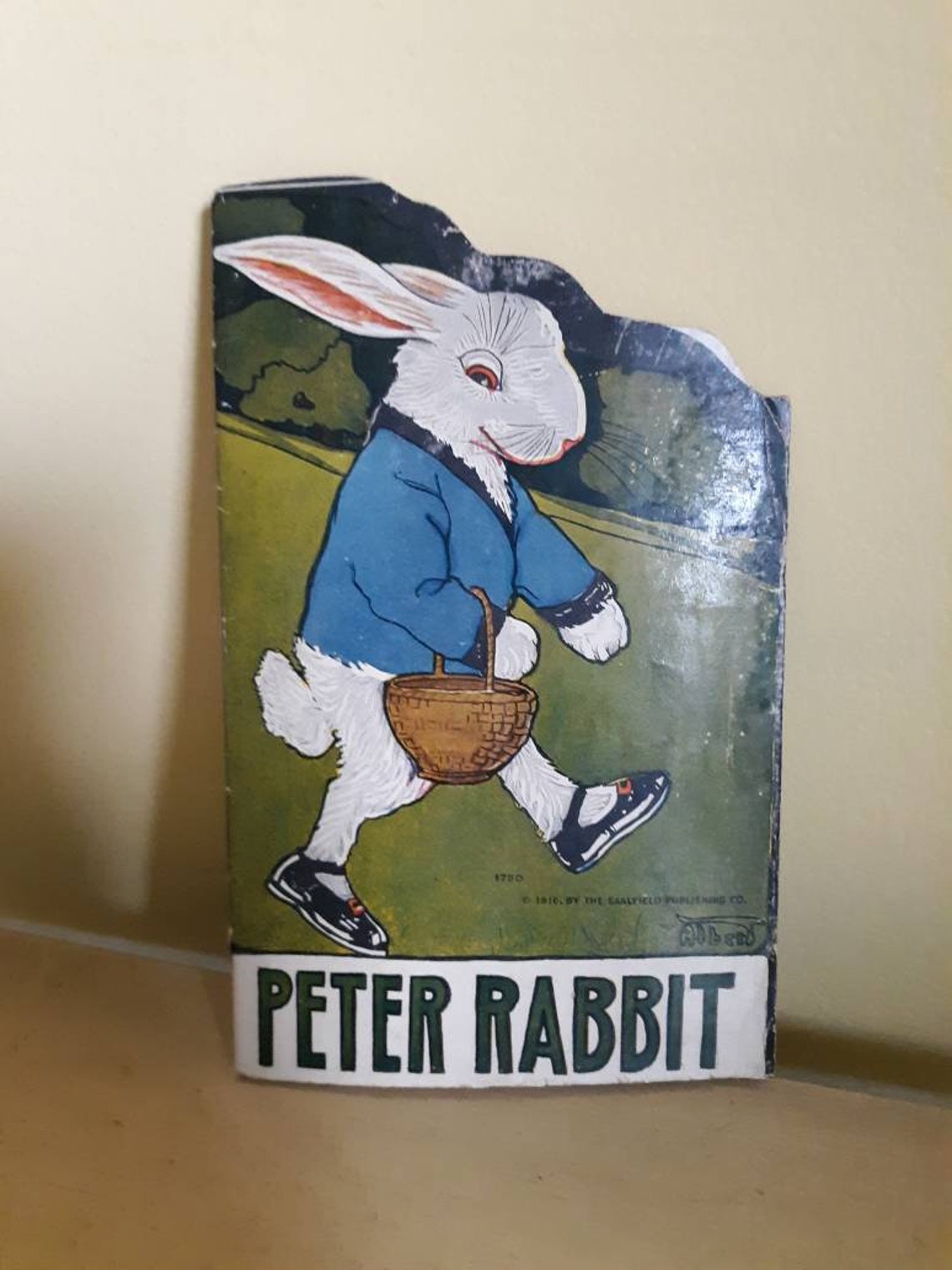the Slingshot
Thursday, June 10, 2021
The American Peter Rabbit
Sunday, May 4, 2014
Kokura Ware - mid-century modern dishes from Japan
Their teapots and cream pitchers are equally gorgeous. See a turquoise flowered creamer (Bonair pattern) here and a teapot in the Fairton pattern here. Their Fairwin pattern of green, pink and gray feathery leaves looks like it was designed in 2014! It's a super trendy pattern that is my current favorite. See an example here.
History
In 1917 Kazuchika Okura (K. Okura) started a ceramics company under the name of TOYO TOKI CO., Ltd., which was later renamed TOTO. They developed ceramic bathroom fixtures for the Japanese market and started exporting chinaware to the American market. They are still in business today. And while they no longer make chinaware, design is as important to them today as it obviously was 60 years ago. Their bathroom fixtures are beautiful examples of modern design. Current TOTO products.
Find the covered butter dish for sale at my Etsy shop: www.TheSlingshot.etsy.com
The other Kokura Ware can be found at other Etsy shops by following the links.
Butter dish in the Mapleton pattern:
Thursday, April 11, 2013
Hi, I'm Nellie and I have too much stuff! While I admire the minimalist aesthetic and I used to think I'd grow up to live in a beautifully modern, empty white loft, full of sharp angles and not much else, I've come to realize that's not me. I love my grandma's Pyrex mixing bowl, and my grandpa's antique curvy wrench, and my books whose spines don't coordinate..., well, with each other or anything else. While I admire the beauty of those listings, I just can't buy books because their beautiful hardback covers match my couch. (Have you seen those Etsy listings of 5 vintage books in shades of white or turquoise?)
I've heard that you're supposed to take pictures of things and save the pictures instead of the objects, but a photo of my mom's mom's jewelry box just isn't the same as trying on the pins and clip-on earrings with my daughter. I can remember trying everything on in my grandma's bedroom, when my mom was a young mom... wow, a younger mom then I am now.
Anyway, I'm not getting rid of that jewelry box, even though I don't wear that jewelry. (Although now that I'm thinking of it, there are some neat pieces I should wear.)
I just love collecting and researching things and so to avoid burying myself and my family under collapsing piles of stuff, I'm sorting and selling! (and still adding to my collection and the shop because I love finding beautiful things and finding homes for them.)
Check out my shop http://theSlingshot.etsy.com
Wednesday, March 27, 2013
I found this vintage exit light from the 1930s
Modernistic vintage 1930s Wedge Exit Light by Kopp Glass
Here is the original 1938 catalog page at the Vintage Ads and Books website featuring this wall-mounted wedge-shaped glass exit light.
Here is another old catalog page for sale showing a Kopp wall mounted exit light.
Our light is stamped "KOPP" on the back.
A little history of the company and its founder, Nicholas Kopp...
A chemist, Nicholas Kopp, trademarked a mixture for a vibrant red glass in the 1890s. [Pittsburgh Post-Gazette]
Before the turn of the last century, he worked for Hobbs Glass Company, then for the famous Fostoria Lamp and Shade Company where his father, Nicholas Kopp, Sr also worked. When Consolidated Lamp and Glass Company bought out Fostoria, he went to work with them. Consolidated is the company that produced the highly collectible Ruba Rombic Art Deco line of glassware.
[The Antiquarian]
In 1900, Kopp struck out on his own, founding the Kopp Lamp and Glass Company and began manufacturing lamps.
[He] took on new partners a year later and renamed the business Pittsburgh Lamp, Brass and Glass Co., or Pilabrasgo for short. It specialized in lamps and lighting. The bright red glass that Kopp formulated found a market in the railroad industry for signal lights. Union Switch & Signal, a railroad products company begun by George Westinghouse in Swissvale [PA], was likely an early customer. Pilabrasgo, however, went bankrupt in 1926 and Kopp reorganized the company with [Charles] Curry, again naming it [Kopp Glass, Inc.] Railroad signal lenses, light fixtures, lamps and vases were the core of the business. From this newspaper article in the Pittsburgh Post-Gazette in 2002
Back in the day, Kopp also produced gorgeous modernistic glass ceiling globe shades like this one:













